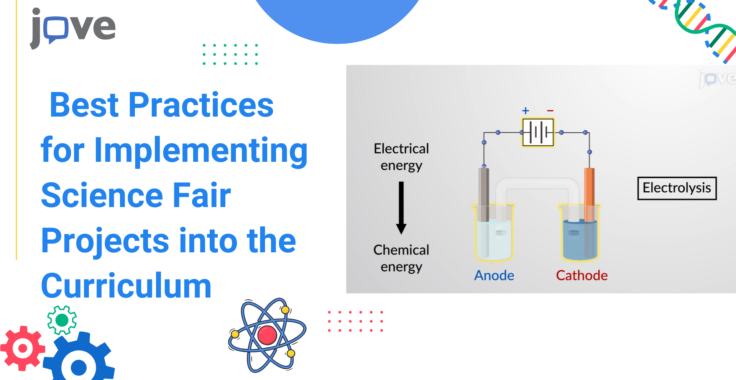
Best Practices for Implementing Science Fair Projects into the Curriculum
Science fair projects are a classic way to get students excited about STEM, but what if they could become more than just an annual event? Imagine if science fairs were woven right into the curriculum, where students could explore their curiosity, apply class concepts in hands-on projects, and gain critical thinking skills throughout the year. Studies show that project-based learning in STEM improves students’ understanding and retention by up to 35% (source), making it a powerful approach for high school classrooms.
That’s where JoVE can make a difference, with video resources for science designed to guide students through each step of their projects, helping them visualize scientific processes and boosting their confidence.
Let’s explore the best ways to integrate science fair projects into the curriculum for a more dynamic, engaging learning experience!
Why Science Fairs Projects should be integrated into your curriculum
When science fairs become part of the regular curriculum, they provide students with the time and resources needed to dive deeply into topics. Integrating curriculum-based science projects benefits students by:
- Building foundational skills: Students develop practical skills like data collection, hypothesis testing, and critical thinking.
- Increasing engagement: Projects allow students to explore topics they’re passionate about, from environmental science to chemistry.
- Reinforcing learning: Concepts taught in class come alive as students apply them in their projects, leading to better understanding and retention.
Using Educational Videos to Enhance Science Fair Projects
Educational videos are invaluable for helping students grasp complex concepts and conduct experiments with confidence. JoVE provides video resources for science that break down challenging topics into manageable segments, helping students understand procedures and concepts. For instance, students can learn DNA extraction through an experiment, explore molecular decomposition through water electrolysis, or investigate chemical separation with a simple chromatography activity using coffee filters. Here’s how educational videos can make science fairs more impactful:
1. Visualizing Scientific Processes
JoVE’s videos cover essential science fair topics, from the basics of the scientific method to specifics. These videos ensure that students understand each step before they dive into their own experiments, minimizing errors and boosting their confidence.
2. Enhancing Experiment Preparation
Science fair projects often involve complex setups and procedures. With JoVE’s video guides, students can prepare for experiments by observing step-by-step procedures.
3. Self-Paced Learning and Review
The ability to re-watch videos means students can learn at their own pace and review challenging steps as needed. This flexibility ensures that each student is well-prepared and confident, whether they’re working on STEM projects for a chemistry or physics fair.
Engaging Science Fair Ideas for Students
Selecting engaging science fair ideas can be challenging, especially when balancing difficulty with accessibility. Here are some high school-friendly science fair ideas to inspire students:
- Chemistry Exploration: Experiments on acid-base reactions, like using pH indicators, can help students understand chemical properties and reactions.
- Physics Projects: Building simple machines or testing Newton’s laws using common materials allows students to explore physics hands-on.
- Environmental Science Studies: Projects that involve testing water quality through JoVE’s video on analyzing soil health using JoVE’s soil nutrient analysis, allow students to apply biology and chemistry in real-world contexts.
Benefits of Using JoVE for Science Fair Projects
JoVE provides educators with tools to make science fair projects impactful and accessible. By integrating videos into the curriculum, teachers can offer students a practical resource for understanding science fair project ideas. The videos serve as both a foundation and a reference, reinforcing lessons from class and guiding students as they work through their projects.
Conclusion
Integrating science fair projects into your curriculum can inspire high school students to engage deeply with STEM. With JoVE’s video resources, teachers can create a supportive, interactive environment that empowers students to explore complex ideas with confidence. Ready to bring hands-on STEM learning to your classroom? JoVE offers thousands of science videos that make teaching easier and learning more engaging.